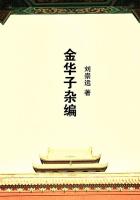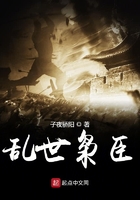No, the explanation that appealed to me so much at first is not admissible. The mandible, whether supplied with teeth or not, does not account at all for the two manufactures. May we, in this predicament, have recourse to the general structure of the insect, although this is not distinctive enough to be of much use to us? Not so either; for, in the same stone-heaps where the Osmia and the two Resin-bees of the Snail-shells work, I find from time to time another manipulator of mastic who bears no structural relationship whatever to the genus Anthidium. It is a small-sized Mason-wasp, Odynerus alpestris, SAUSS. She builds a very pretty nest with resin and gravel in the shells of the young Common Snail, of Helix nemoralis and sometimes of Bulimulus radiatus. I will describe her masterpiece on some other occasion. To one acquainted with the genus Odynerus, any comparison with the Anthidia would be an inexcusable error. In larval diet, in shape, in habits, they form two dissimilar groups, very far removed one from the other. The Anthidia feed their offspring on honey-bread; the Odyneri feed it on live prey. Well, with her slender form, her weakly frame, in which the most clear-seeing eye would seek in vain for a clue to the trade practised, the Alpine Odynerus, the game-lover, uses pitch in the same way as the stout and massive Resin-bee, the honey-lover. She even uses it better, for her mosaic of tiny pebbles is much prettier than the Bee's and no less solid.
With her mandibles, this time neither spoon nor rake, but rather a long forceps slightly notched at the tip, she gathers her drop of sticky matter as dexterously as do her rivals with their very different outfit. Her case will, I think, persuade us that neither the shape of the tool nor the shape of the worker can explain the work done.
I will go further: I ask myself in vain the reason of this or that trade in the case of a fixed species. The Osmiae make their partitions with mud or with a paste of chewed leaves; the Mason-bees build with cement; the Pelopaeus-wasps fashion clay pots; the Megachiles made disks cut from leaves into urns; the Anthidia felt cotton into purses; the Resin-bees cement together little bits of gravel with gum; the Carpenter-bees and the Lithurgi bore holes in timber; the Anthophorae tunnel the roadside slopes. Why all these different trades, to say nothing of the others? How are they prescribed for the insect, this one rather than that?
I foresee the answer: they are prescribed by the organization. An insect excellently equipped for gathering and felting cotton is ill-equipped for cutting leaves, kneading mud or mixing resin. The tool in its possession decides its trade.
This is a very ****** explanation, I admit, and one within the scope of everybody: in itself a sufficient recommendation for any one who has neither the inclination nor the time to undertake a more thorough investigation. The popularity of certain speculative views is due entirely to the easy food which they provide for our curiosity. They save us much long and often irksome study; they impart a veneer of general knowledge. There is nothing that achieves such immediate success as an explanation of the riddle of the universe in a word or two. The thinker does not travel so fast: content to know little so that he may know something, he limits his field of search and is satisfied with a scanty harvest, provided that the grain be of good quality. Before agreeing that the tool determines the trade, he wants to see things with his own eyes; and what he observes is far from confirming the sweeping statement. Let us share his doubts for a moment and look into matters more closely.















